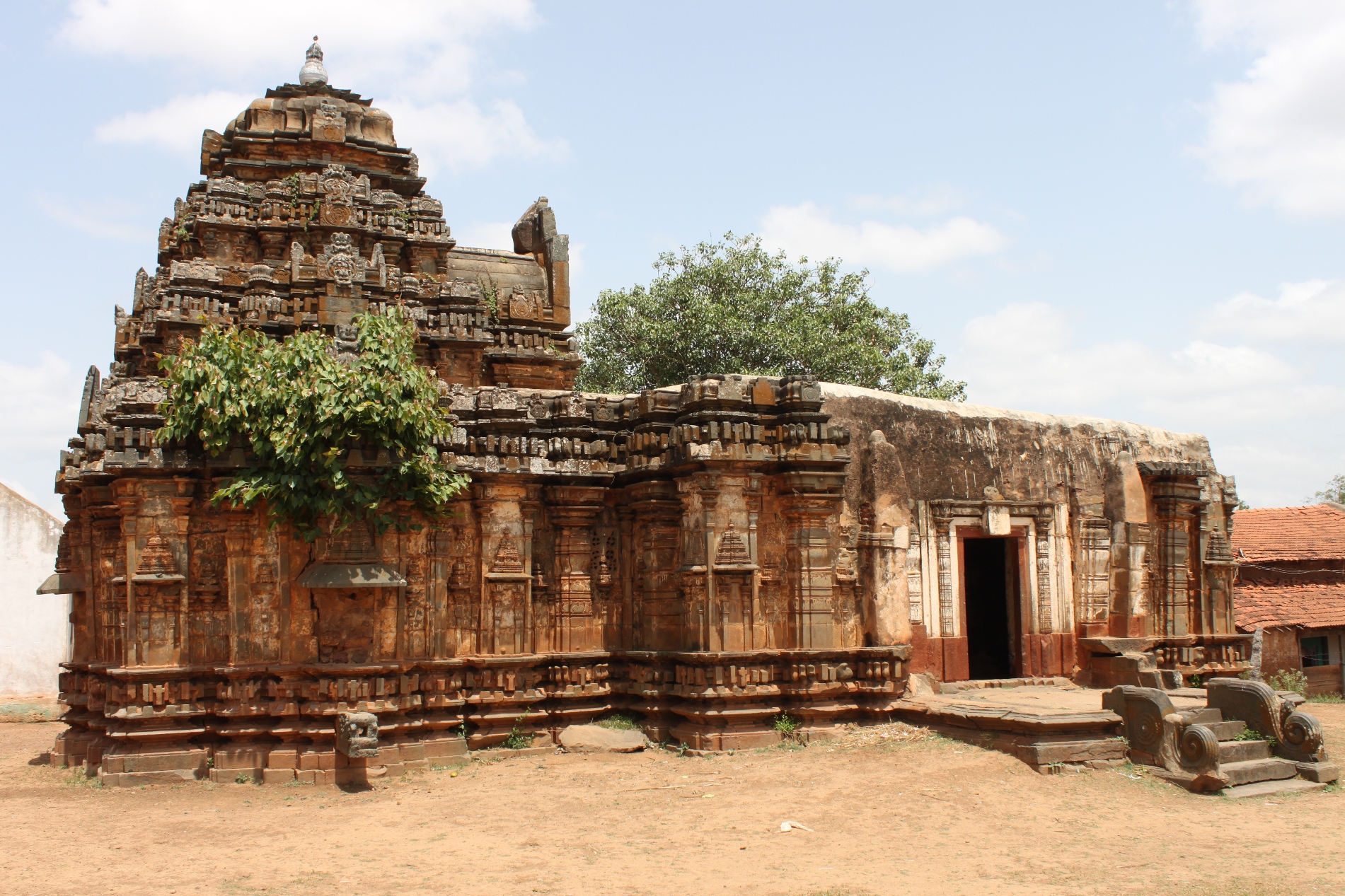Introduction – Niralgi is a small village in Haveri district of Karnataka. It was known as Nirili during the tenth century CE, and as Nerilage during the twelfth century CE as evident from inscriptions found here. Presence of two Kadamba inscriptions proves the influence of the Kadamba chiefs of Banavasi over this region. The Kadamba chiefs were ruling under the patronage of the Kalyani Chalukyas.
A twelfth century CE inscription mentions about the construction and an endowment towards a Jaina shrine and associated teachers. This puts Niralgi in the league of few places where Jaina religion was still in practice. This event took place during the Kalyani Chalukya king Jagadekamalla II, during whose reign the decline of the Chalukyas started.
Siddharameshvara Temple – The temple faces north and consists of a mandapa, antarala and garbha-griha. There are two entrances into the mandapa, one on east and one on west. Central figure on the lintel of the garbha-griha has an image of Vishnu with Garuda which suggests that it was a Vaishnava shrine as suggested by Henry Cousens. At present there is a Shiva-linga inside the garbha-griha.
This is among very few temples where a detached torana is placed before antarala (vestibule) or garbha-griha (sanctum). In past, this design is seen in Dodda-Basappa temple at Dambal and Mallikarjuna Temple at Kuruvatti. The central figure on this torana is of Nataraja which suggests that the temple was probably dedicated to Shiva, which is in contrast to the statement made by Cousens above.
Inscriptions –
- Kadamba inscription of Someshvara I – Epigraphia Indica vol XVI – Dated in Saka 974, corresponding to 1053 CE – The record begins by referring itself to the reign of the Kalyani Chalukya king Trailokyamalla-Ahavamalla (Someshvara I), and then informs us that on a certain date the Kadamba Maha-mandaleshvara Harikesarin formally made over by deputy certain estates to the 300 mahajanas of Nirili for the maintenance of the Piriya Kere or Great Tank and the cult of god Kali. Harikesarin is mentioned as the lord of Banavasi and sprung in the race of the great emperor Mayuravarman. Kadamba flag bearing Hanuman as its banner is also mentioned. The record is composed by the town clerk Jogivayya and engraved by Chittoja.
- Kadamba inscription of Someshvara II – Epigraphia Indica vol XVI – Dated in Saka 996-7, corresponding to 1074-75 CE – the record has two grants, and was engraved probably when the second was granted. The first record is of the time of the Kalyani Chalukya king Bhuvanaikamalla (Someshvara II) and mentions Maha-mandaleshvara Vikramaditya-deva who was probably the younger brother of the king and later ruled as Vikramaditya VI. Mention is also made of a Pallava noble Bhuvanaikamalla-Pallava-Permanandi Vishnuvardhana-Vijayaditya, lord of Kanchi. Vikramaditya and Vishnuvardhana-Vijayaditya were at Bankapura in course of a tour of state, in Saka 996, in the service of king Bhuvanaikamalla, and grated the village Basalur, in Elambi-20, which in turn is in Panungal-500, to the 300 mahajanas of Nirili for the maintenance of the cult of Rameshvara at Pomballi. The second record refers to the Kadamba Maha-Mandaleshvara Santivarman , lord of Banavasi, when at Unchageri, in Saka 997, he, in concert with two other high officers of state, renewed the first grant.
- Broken slab lying near the ruined fort – South Indian Inscriptions vol XVIII, no 151 – dated in the 10th year of the reign of the Kalyani Chalukya king Jagadekamalla (II), corresponding to 1148 CE – After giving an elaborate description of Nerilage and of Malla-gavunda, the Nalprabhu of that place, the inscription states that he constructed a Jaina Chaityalaya called Mallijinasraya. A grant, probably of land, made to the Jinalaya is recorded. Harinandideva, the acharya of the Jinalaya and the female ascetic (aryika) Chandramatiyavve are highly praised. The genealogy of Malla-gavunda is given.
- Stone in the temple of Hanuman – South Indian Inscriptions vol XVIII, no 450 – The stone engraved in characters of about the 18th century CE is boundary stone called Vamanamudre-kallu. It states that it marks the boundary of Gutalala. The Desayi of Lakshmesara erected it.
How to Reach – Niralgi is about 20 km south of Kundgol and 6 km SE of Tadas. It is located on NH4 or Sira Bypass, between Shiggaon and Ramankop. Kundgol is the nearest railway station which is connected with Bangalore, Haveri, Hubli and other major railway heads.
References –
- Cousens, Henry (1926). The Chalukyan Architecture of the Kanarese Districts. Archaeological Survey of India. New Delhi.
- Thomas, F W (1921-22). Epigraphia Indica vol XVI. Archaeological Survey of India. New Delhi.
- Palande, M R (1959). Dharwad District Gazetteer. Karnataka Government. Dharwad.

